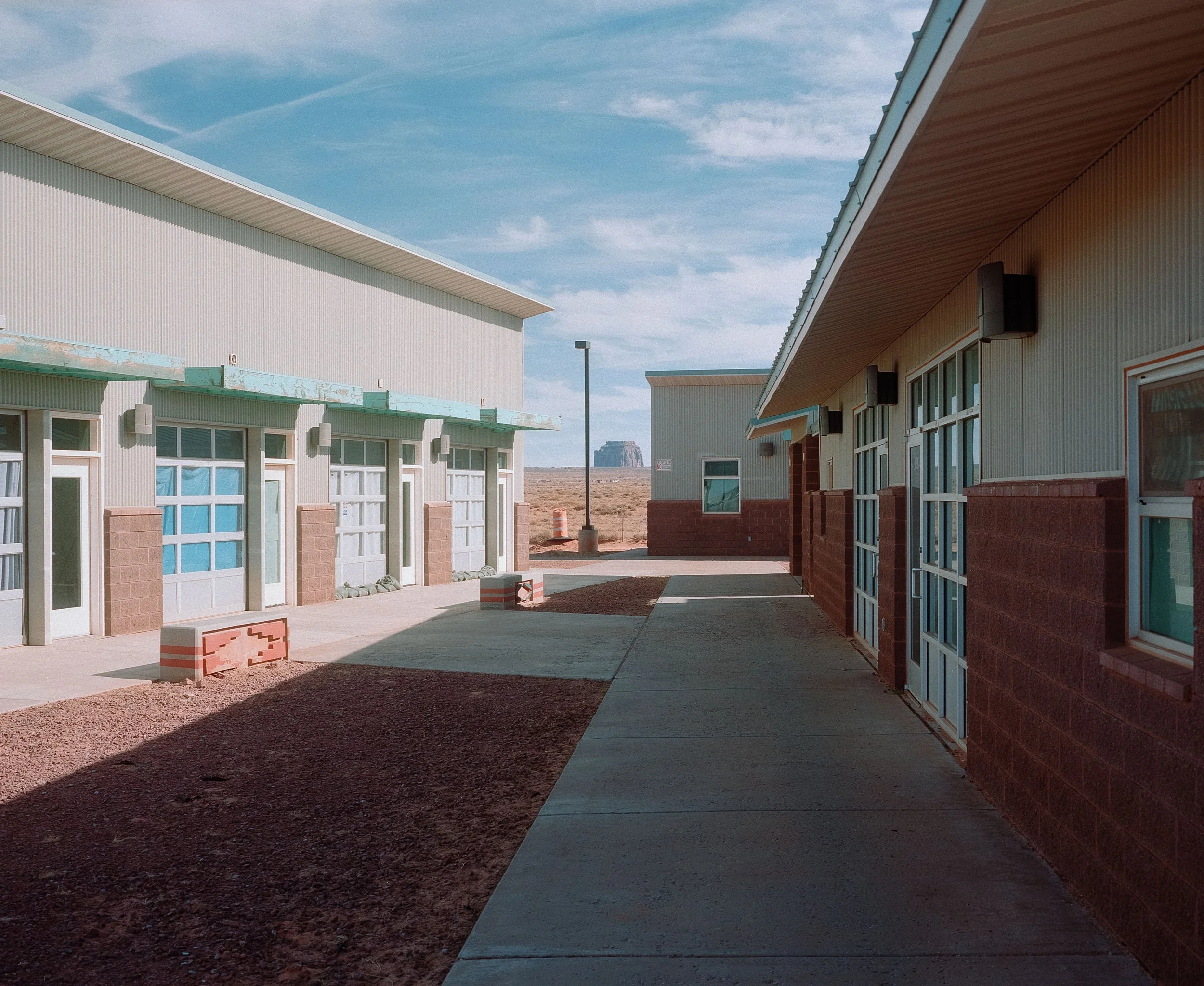15,363 kilometers, in the West and South-West of the United States of America, traveled “on the road”.
The importance of moving with the body, but above all with the mind, guides me to freedom of expression through photography, today an essential tool of my daily life.
This aspiration has been driving my desire to create for some time and as I looked at a giant topographic map of the United States in November 2021, I traced the first itinerary that will take the name “West Safari”, a real timeless adventure.
This represents the motive of my photographs, transforming the image into a real-time machine.
Being able to compose scenes in the modern era with a certain time reference that is completely out of date marks the first impact on those who turn to these shots, dominated by an altered influence from the past, an aesthetic that I constantly seek through the study of light.
The camera becomes a window into the present of a new and engaging reality, which between euphoria and a novelty effect, guides me step by step to discover a part of America known to most, and which today is abandoned and left to die.
I go through different biomes in my 33 days divided into two expeditions, one in May 2022 in California and surrounding areas and the other in November 2022, where I traveled 6 different states of the American Southwest.
Inspired by the historic novel “On The Road” by J. Kerouac, the free spirit of a limitless mind accompanies me at every stage, always re-adapting to a different panorama and unpredictable situations, a perspective I have never experienced before and which has stimulated my creativity for all my stays in the States.
The panorama of classic aesthetic taste is cleared by my desire to make a “landscape” at first not perceptible as aesthetically pleasing but which gives a source of study and insight into the society in which it is portrayed, in its trivial aspects.
The Safari presents itself as an expedition that sees me personally involved as a supervisor of an unknown and curious reality. Where the compositions become images of a “Man-Altered Landscape”, a term coined in the mid-1970s by the photographic current New Topographics, designed to represent a new type of panorama, which documents the decay of a now-defunct era, abandoned even if known and acclaimed in modern culture.
The so-called Far West, a place of large spaces of the oldest American tradition between cowboys and Navajo natives, in this Safari is presented as a land of private properties, without any care except exclusively in tourist attractions.
Despite the infinite spaces of southwestern America, rich in arid nature and an innumerable quantity of ghost towns, it becomes almost a challenge, kilometer after kilometer, to document city after city, historical l details of what was and what will probably be lost over time, absorbed by the constant presence of nature or any irrevocable human action.
Different, varied of any year and color, the Safari cars enrich landscapes, between roads and nature. They are abandoned and deteriorated by atmospheric agents, some look like animals, lions that, waiting for prey that will never arrive, rest in topographically altered terrain, between old garages and Route 66 muffler stores.
Multifunctional refuge, tactical base of the leader of the road, the motels with their variegated neon, light up the streets in the evening and signal with character during the day.
In the Safari, they are oases, mirages in the middle of nowhere.
There are many in operation but equally abandoned, which become flags of a culture in decay, if not already deceased.
Speaking with the locals, many have already turned off the lights for some time due to the increase in the cost of living.
West Safari underlines the importance of the conception of remembrance and preservation of what is a historic monument.
The monumental value of the American West is very often underestimated and not valued for what it was and will be over time.
Private property dominates over historical value, an unclaimable and insurmountable value.
Route 66, however touristy and pleasant at first glance, hides forgotten, uninhabited and inaccessible gems.
The places photographed represent monuments, which despite the passage of time, must be preserved and loved in their aesthetic conception, in a young land dominated by the contrast between man and nature.
- Francesco Aglieri Rinella
West Safari | Poreč Museum exhibition prize | Urban Photo Awards 2023
“West Safari” photo book, published in June 2023 with a limited series of 50 pieces. SOLDOUT
Collect the NFTs on Foundation & ExchangeArt





































































